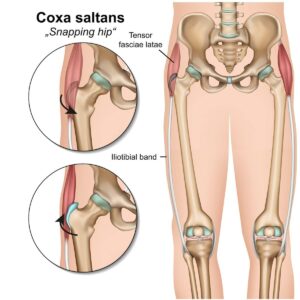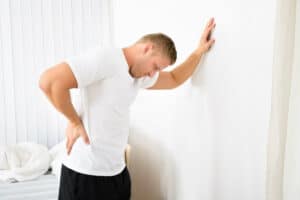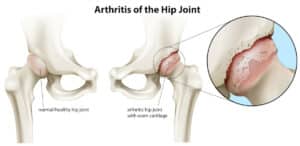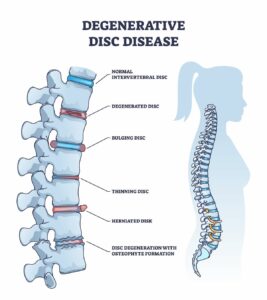Free download: Top 10 Natural & Easy Remedies for Joint Pain from Home. Learn these helpful remedies.
Estimated Reading Time: 6 minutes read
Have you ever felt like your hips are just not cooperating with you? Maybe they feel stiff when you try to stand up after sitting for a while, or perhaps they don’t move as freely as you’d like during exercise. This feeling is what we often refer to as having ‘tight hips’. It’s a common issue for many people, regardless of whether they lead an active or passive lifestyle.
Tight hips can really throw a wrench in your daily activities. They can make simple movements like walking, bending, or even tying your shoes feel like a chore. Understanding what tight hips mean and why they occur is the first step toward finding relief and improving your overall mobility and comfort.
Table of Contents
What Does It Mean to Have Tight Hips?
When we talk about tight hips, we’re referring to a lack of flexibility and mobility in the hip joint and the surrounding muscles. This can lead to a restricted range of motion, discomfort, and sometimes even pain.
- Restricted Movement: With tight hips, you might find it hard to do things like squatting, lunging, or even just walking comfortably.
- Feelings of Stiffness: There’s often a sensation of stiffness or a lack of ‘give’ in the hip area, which can be more pronounced after periods of inactivity.
What Causes Tight Hips?
Several factors can lead to the development of tight hips:
- Sedentary Lifestyle: Spending long hours sitting at a desk or on a couch can cause hip flexor muscles to shorten and become tight.
- Active Lifestyle Without Proper Stretching: Athletes and those who engage in regular physical activity can also experience tight hips if they don’t balance their workouts with proper stretching.
- Age-Related Changes: As we age, our muscles naturally lose some elasticity, which can contribute to tightness.
- Posture and Body Alignment: Poor posture and improper body alignment during daily activities or exercises can put extra stress on the hip area.
How Do You Know If Your Hips Are Tight?
Recognizing tight hips can be pretty straightforward:
- Difficulty with Certain Movements: Struggling with movements that require hip flexibility, like deep squats, is a telltale sign.
- Discomfort After Sitting: Feeling stiff and sore in the hip area after sitting for long periods can indicate tightness.
- Reduced Range of Motion: Noticeably less flexibility, like not being able to lift your leg as high or bend forward comfortably, is a sign of tight hips.
Understanding these aspects of tight hips is crucial. It helps you identify the problem and start working towards a solution, which often involves a combination of exercises and lifestyle adjustments. Remember, dealing with tight hips isn’t just about immediate relief; it’s also about taking proactive steps to ensure long-term hip health and mobility.
Exercises and Stretches for Alleviating Tight Hips
Starting your day with simple hip exercises can make a big difference. They’re not just about loosening or building up muscle; they teach your body to move more healthily. Over time, you’ll likely feel less stiffness and more ease in moving around. It’s a small effort each day for a big improvement in how your hips feel and work. Remember, consistency is key for the best results.
Soft Tissue Massage for TFL Relief
The first step in releasing TFL tightness involves targeted soft tissue massage:
- Find the Tight Spot: Feel around your TFL or IT band for any particularly tight areas. This spot is usually located on the outer part of your thigh, just below your hip.
- Apply Pressure: Using a foam roller, a lacrosse ball, or a massage gun, apply firm but comfortable pressure on the tight spot.
- Massage Duration: Hold the pressure on the tight spot and gently massage for about 30 seconds to a few minutes, depending on your comfort level. This helps break up the tightness and promotes relaxation in the muscles.
Stretching for Flexibility
Incorporating specific stretches can enhance flexibility and further alleviate tightness:
1. IT Band Stretch in Sitting
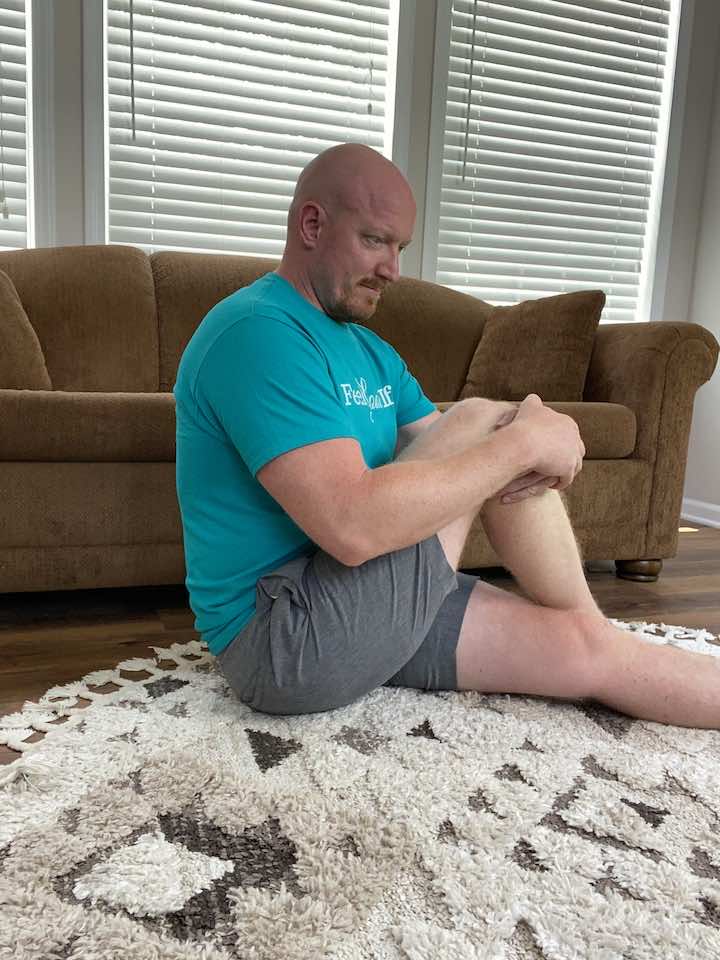
- Sit tall with your legs extended straight out in front of you, maintaining a straight back.
- Bend one knee and position your foot on the outside of your straight leg.
- Rotate through your trunk, gently twisting towards the bent knee until you can place an elbow on the outside of the knee.
- Maintain this position, and if comfortable, enhance the stretch by gently pressing your elbow into your knee without causing any pain.
- Hold the stretch for 30 seconds, repeating this sequence for a total of 3 sets.
2. Piriformis Stretch
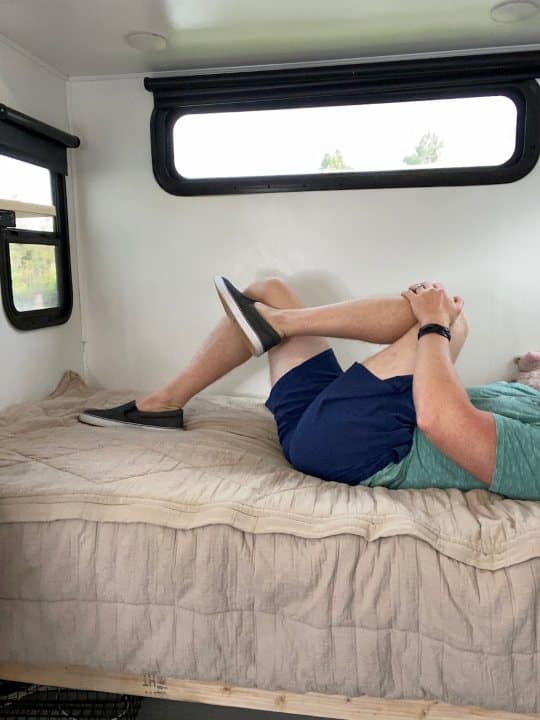
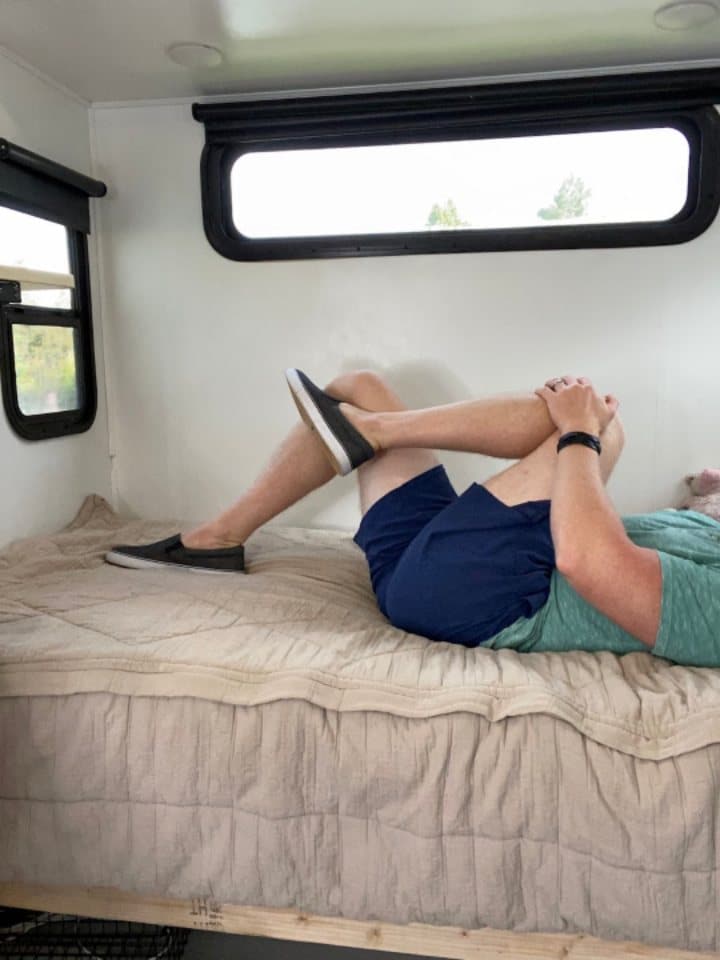
- Lay on your back on your floor, bed, or couch.
- Bend both knees so the feet are flat on the surface.
- Cross the leg to be stretched over the opposite thigh so that it’s fully resting on that leg.
- Take the opposite hand and place it on the outside of the thigh on the leg to be stretched.
- Gently pull the thigh towards the opposite hip (avoid allowing the hip and/or back to lift off the surface).
- Hold for at least 30 seconds.
- Repeat for 3 sets in total.
Strengthening for Hip Stability
Strengthening the hip muscles is key to preventing them from becoming tight or weak:
1. Bridge
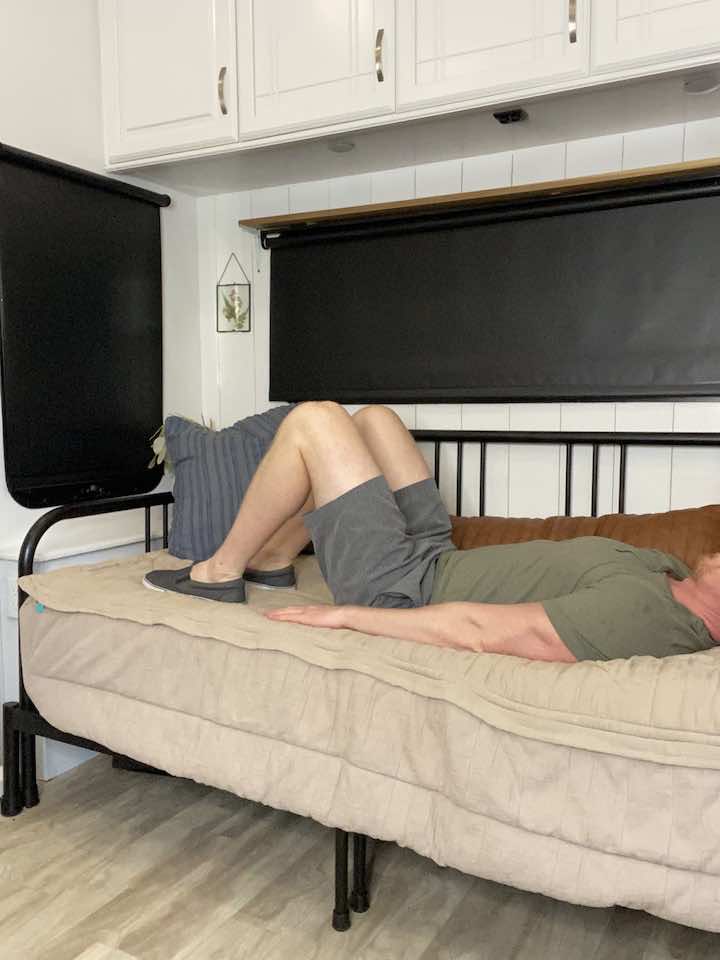
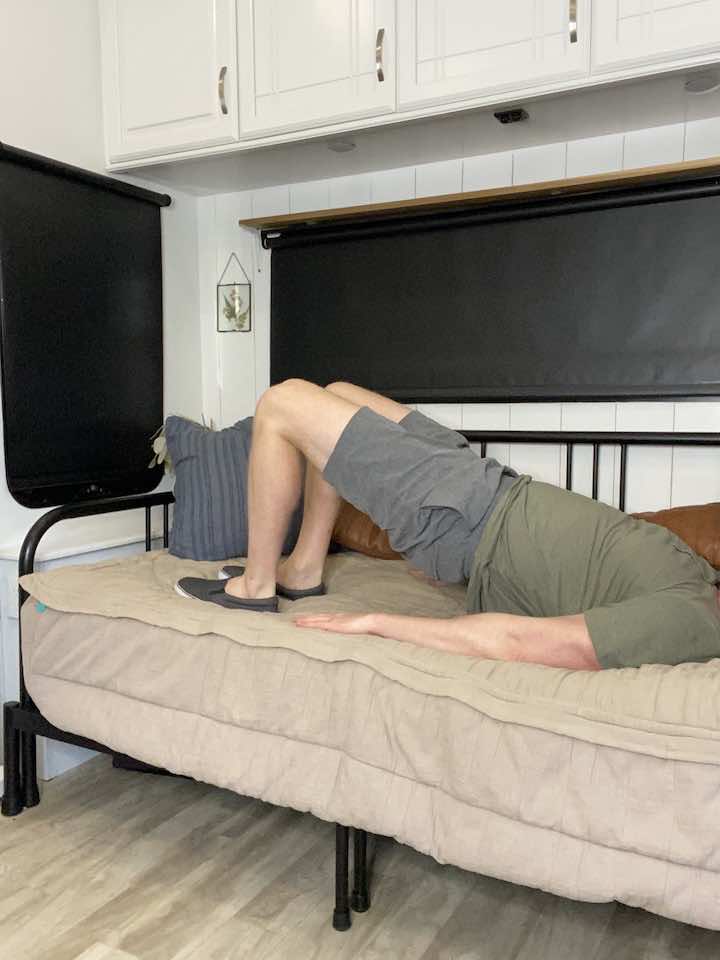
- Lie on the floor or bed with your legs bent and feet flat on the floor/bed.
- Gently squeeze your butt muscles to lift your hips off the ground, feeling a nice stretch in your front thigh and a contraction in the back of your thigh.
- Lower your hips back down to the starting position.
- Repeat 10 times.
2. Clamshells
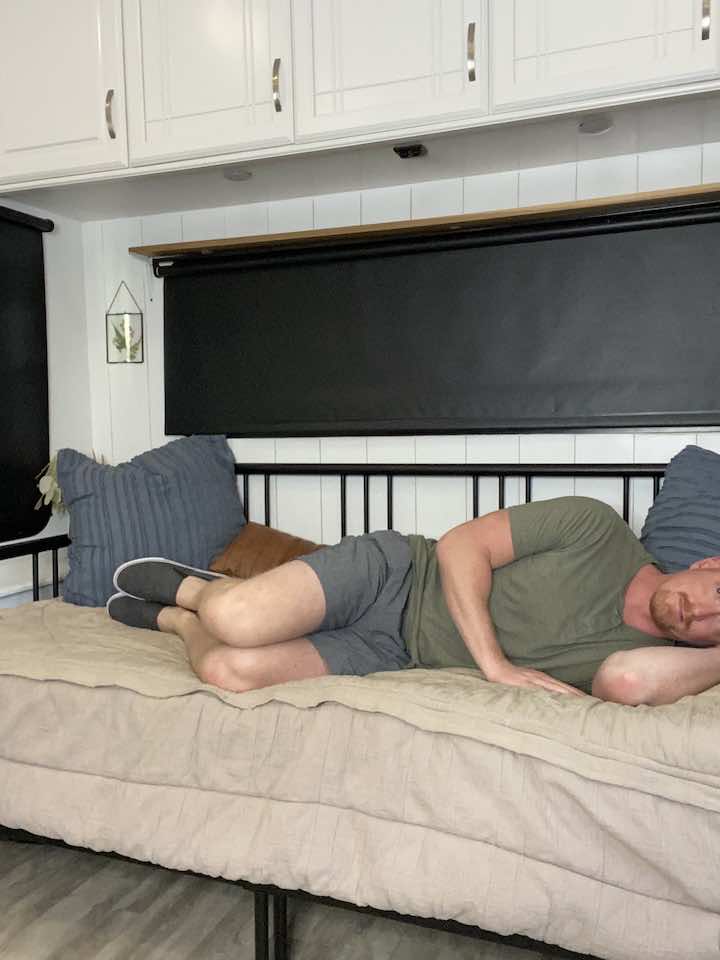
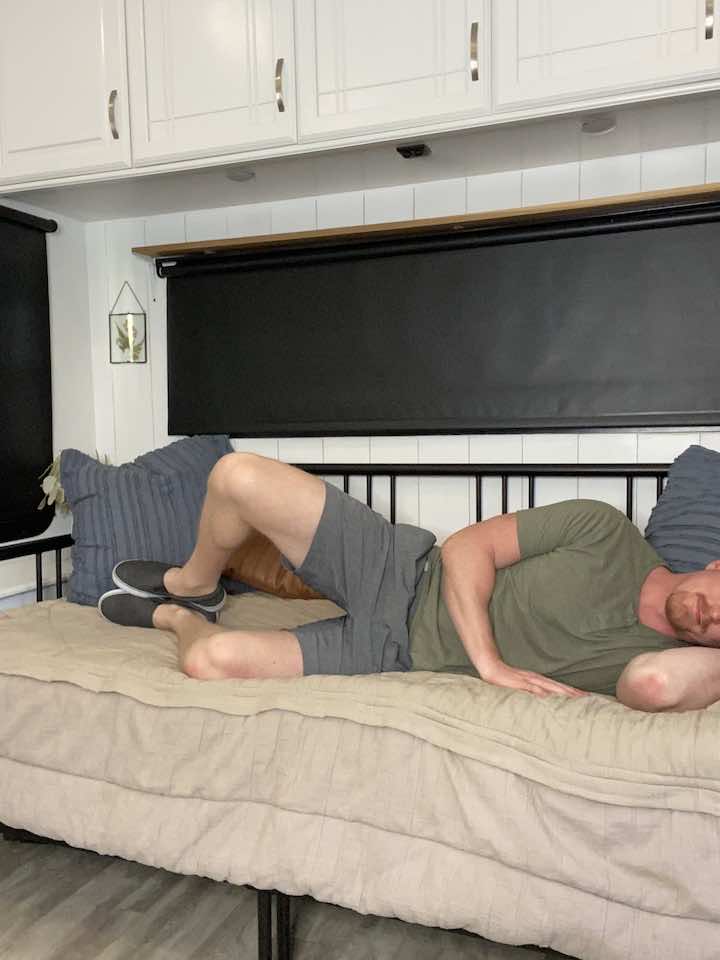
- Start by paying on your side with both knees bent.
- Keep your feet in contact with each other, and then rotate your top leg up.
- Make sure you keep your spine in alignment and your hips don’t rock back! Rule of thumb is to do a smaller range of motion if you think your back is moving.
- Rotate your top leg back down to the starting position.
- Do this 10 times for one set, and complete 3 sets.
3. Standing Hip Lifts
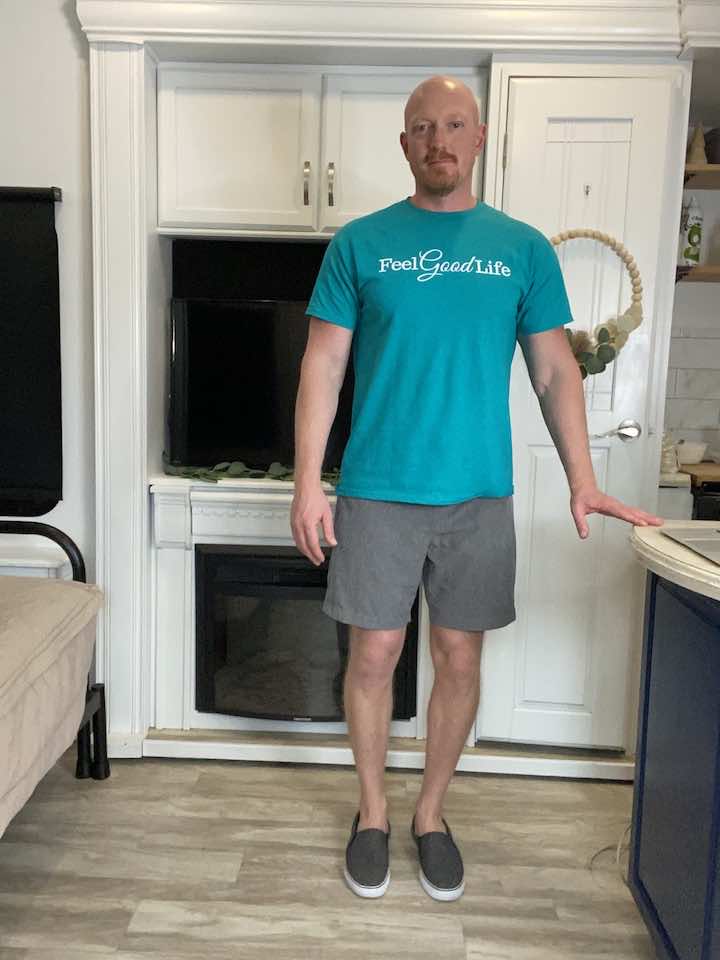
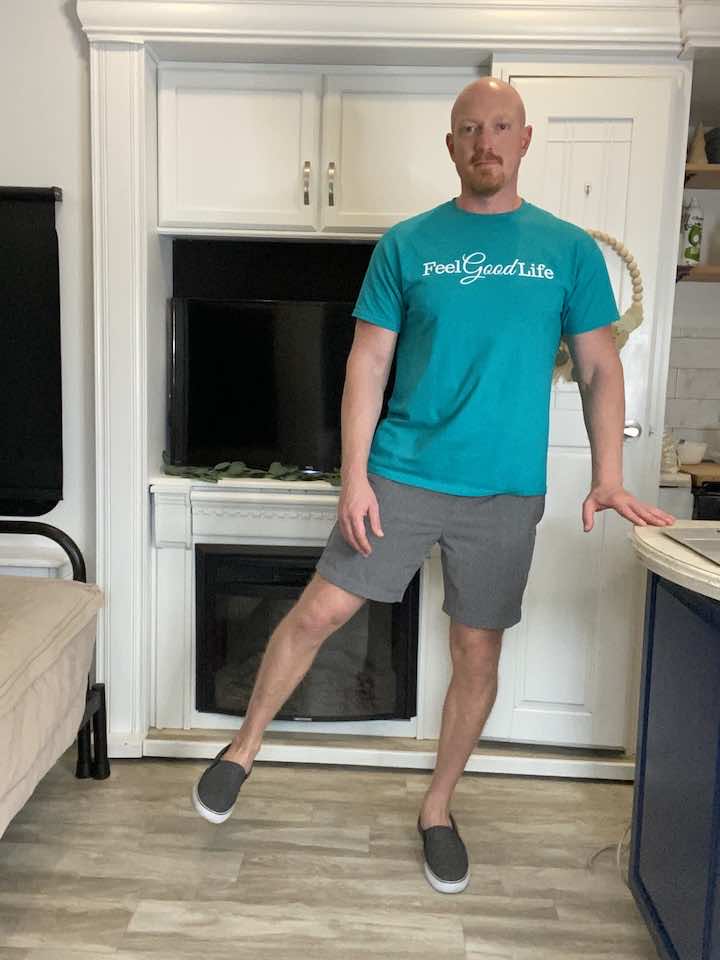
- Stand tall with one hand placed on a bed or chair. Balance on your left leg, keeping a soft bend in your knee to keep from locking out.
- Leading with your heel, lift your right leg out to the side. Be sure not to lean to the left.
- Repeat 10 times per leg.
- Complete 3 sets of the exercise.
4. Standing Hip Extension
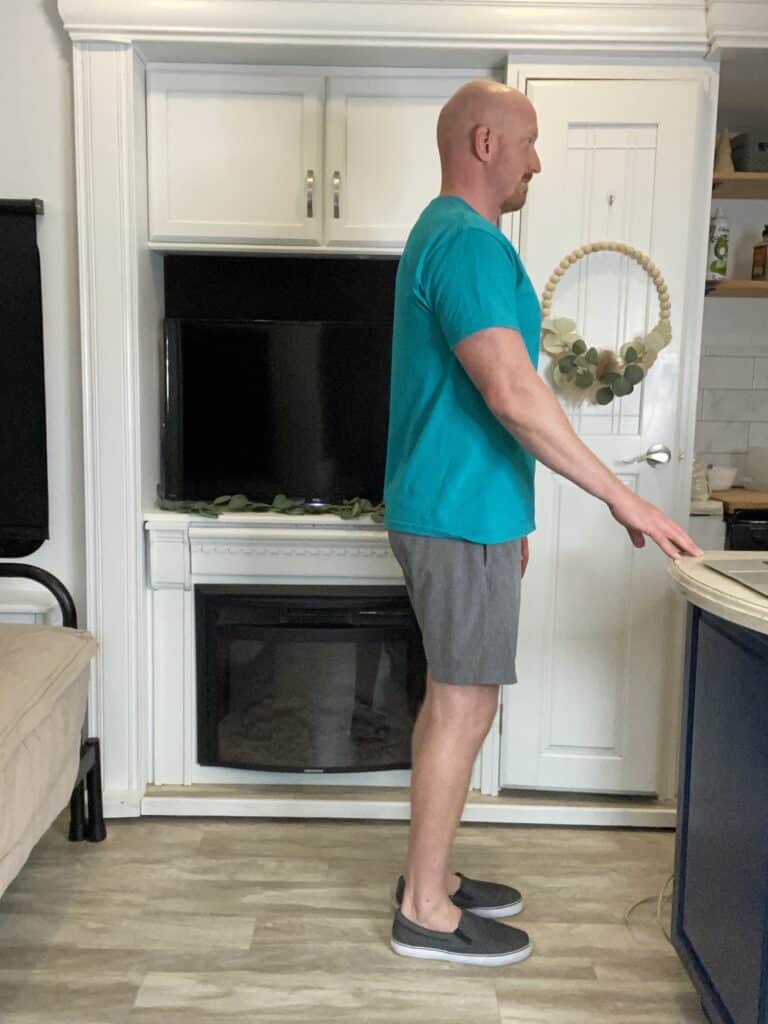
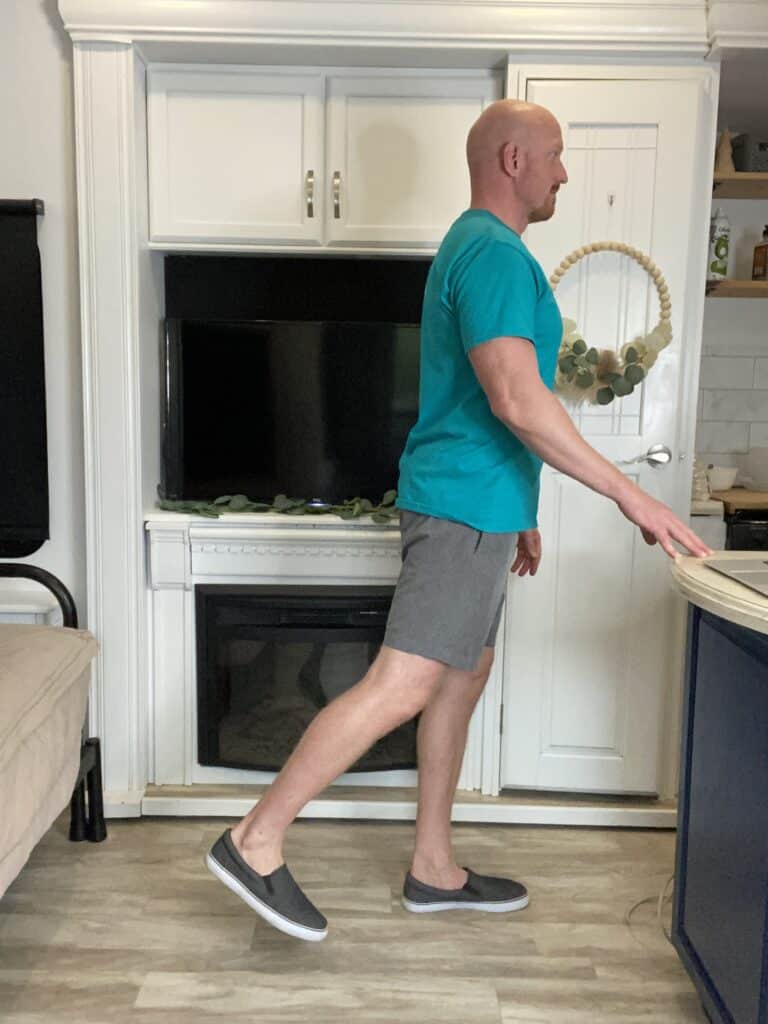
- Stand tall with your hands placed on a steady surface. You can use a counter, sink, or chair (no chairs with wheels) to hold on to for balance.
- Shift your weight onto your left leg, keeping a soft bend in your left knee to keep it from locking out.
- Then, keeping your toes pointed forward and your right leg straight, lift your right leg back a few inches, then lower back down.
- Repeat 10 times per leg for 3 sets.
Conclusion
By combining soft tissue massage, stretching, and strengthening exercises, you can effectively manage TFL tightness and maintain healthy hip function. Regular practice of these techniques can lead to significant improvements in hip flexibility and strength. Remember, consistency is key, and always listen to your body’s limits. If you experience persistent pain or discomfort, consult a healthcare professional for personalized guidance.








